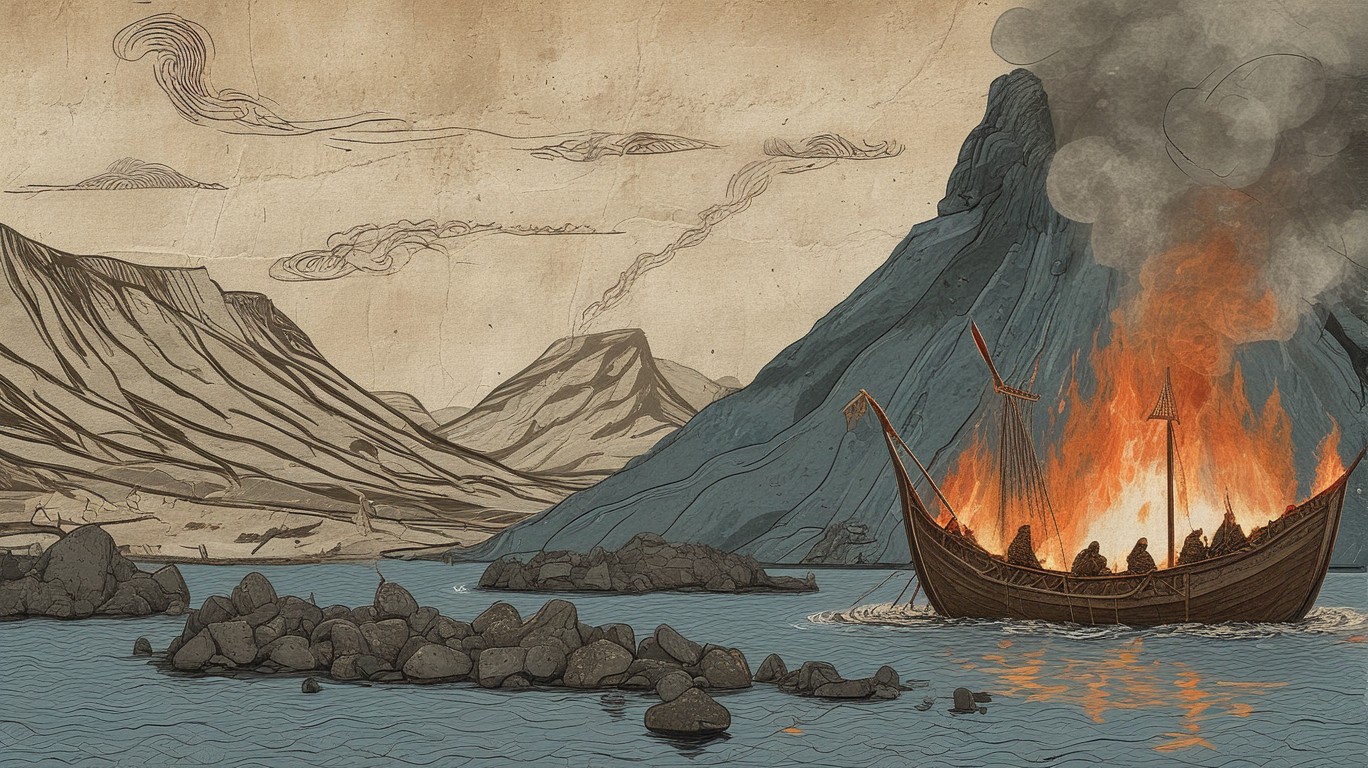
In the time of great turmoil, the townsfolk of Grindavík and its neighbouring haven of the Blue Lagoon have been forced from their homes by the wrath of the fiery mountain. The BBC reporteth thusly.
It was a fair day when the good people of these two towns woke to find themselves in the grip of an infernal heat, their once-verdant fields now scorched and blackened by the flames of the great volcano which loomed over them. 'Twas as if the fires of the underworld had breached the gates of heaven itself.
The townsfolk, driven mad by fear and desperation, turned to their leaders for counsel. The burgomeister of Grindavík, a wise man named Þorvaldur, summoned forth his most trusted advisors and beseeched them to find some means of appeasing the angry gods who held their homes in such malevolence.
One of these advisors, a learned scholar by the name of Snæbjörn, proposed that they offer up their most prized possessions as a sacrifice to the volcano god. 'Twas a desperate measure indeed, but one which many saw as their only hope for salvation.
The goodwife Þoríður, another advisor to the burgomeister, spoke out against this plan. She argued that such an offering would do naught but enrage the gods further, and that they must instead turn to prayer and trust in the mercy of their heavenly protectors.
A third counselor, a grizzled warrior named Hrafna-Flóði, suggested that they take up arms against the mountain itself. 'Twas an audacious plan, one which would undoubtedly result in great loss of life. Yet many saw it as a noble gesture, a final stand against the fiery beast which had so cruelly driven them from their homes.
Alas, 'twas not to be. Even as these desperate measures were being debated within the halls of power, the fires of the mountain roared ever higher, casting their shadow over the townsfolk and threatening to consume them utterly.
'Twas then that a wise elder by the name of Sigríðr stepped forth with a vision of hope for her people. She spoke of an ancient prophecy, one which foretold of a great hero who would rise from the ashes of calamity to save the people of Grindavík and the Blue Lagoon.
'Twas said that this hero would be marked by a sign, a mark upon his shoulder in the shape of a mighty beast. Many were skeptical, but as the fires raged on and all hope seemed lost, a young warrior by the name of Kári appeared at the gates of Grindavík bearing just such a mark.
Kári claimed no knowledge of how he came to bear this mark, nor anything of the prophecy which had been spoken of. Yet his arrival could not be denied, and as the people looked to him in desperation, he vowed that he would do everything within his power to save them from the wrath of the mountain.
And so began a great journey, one filled with danger and peril. Kári, accompanied by a band of brave volunteers from both Grindavík and the Blue Lagoon, ventured into the very heart of the volcano itself.
'Twas there that they discovered an ancient chamber, hidden deep beneath the earth. Within this chamber lay a mighty crystal, pulsing with an unearthly light. Kári knew at once what he must do: he would offer up his own life as a sacrifice to the gods, using the power of the crystal to quell the fires of the mountain.
'Twas a desperate plan indeed, one which would cost him dearly. Yet Kári was undeterred, and as his friends looked on in horror, he stepped forth into the chamber and took up the mighty crystal.
For hours it seemed as though all hope were lost. The fires continued to rage, the mountain shaking with an awful fury. Yet at last, the power of Kári's sacrifice began to take effect. Slowly, ever so slowly, the heat began to ebb away, the flames of the volcano retreating back into the earth.
And as the people of Grindavík and the Blue Lagoon looked on in awe, they saw Kári emerge from the mountain, his body wracked with pain but his heart filled with pride. For he had done what none other could: he had saved his people from the wrath of the fiery mountain.
Now, as the townsfolk begin to rebuild their homes and lives, they look to Kári as a symbol of hope and strength. His story is told far and wide, a tale of courage in the face of great danger, of sacrifice and of faith. And though the memory of the wrath of the mountain may yet take some time to fade, the people of Grindavík and the Blue Lagoon know that they have much for which to be thankful: they have Kári, their hero, and a future filled with hope.
Thus endeth this tale of great turmoil and even greater triumph.